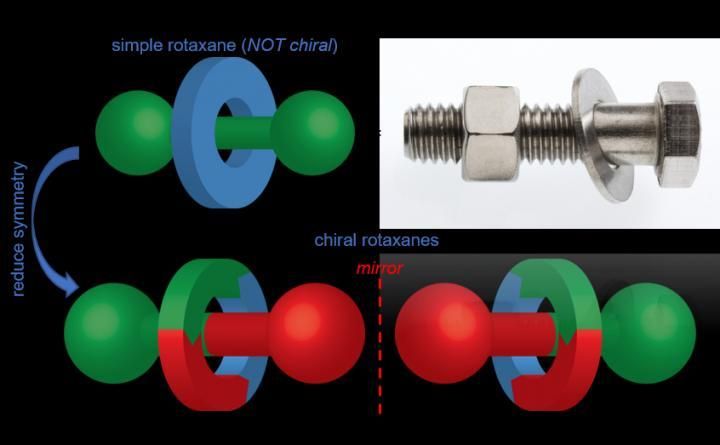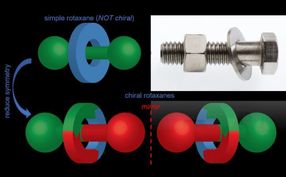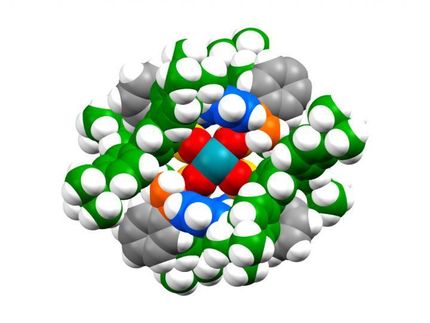Research uncovers a new way of making chiral catalysts
Scientists at the University of Southampton have discovered a new way to create one hand of a chiral molecule by using a mechanical bond as a catalyst.

Hands are a simple example of chiral objects -- mirror images but not identical
University of Southampton

Rotaxanes are composed of a ring wrapped around a stoppered axle, like a washer on a bolt
University of Southampton

The chiral rotaxane catalysts selectively produced one hand of the target
University of Southampton



Chiral molecules are two molecules that are mirror images of each other but not identical - much like the left and right human hands. When such molecules are used in pharmaceutical drugs, each "hand" reacts differently in the human body. In some cases whilst one hand treats the illness, the other side can be toxic so being able to make only one hand is extremely important.
Rotaxanes consist of a ring shaped molecule wrapped around a dumbbell shaped axle (like a washer on a bolt). The ring and axle are held together by what we call a mechanical bond, as opposed to chemical bonds that usually connect atoms to form molecules.
In a new study, published in the journal Chem, Professor Steve Goldup from the University of Southampton's School of Chemistry made use of these mechanical bonds to create chiral molecules. Professor Goldup and his team synthesised a chiral rotaxane that could bind to gold atoms; the gold atoms were then used to catalyse a simple chemical reaction.
Professor Goldup said: "Chiral molecules, and how to make a single hand of them have been investigated since the birth of chemistry. Chiral rotaxanes have not been used in these studies to any extent as until recently they were very hard to make in one mirror image form. My group developed a very simple, general concept to make chiral rotaxanes as a single hand. This means we can now start investigating what problems they can help us solve in chemistry, biology and materials science."
Chiral rotaxanes are an ideal environment for catalysts as the structure of a ring wrapped around the axle creates a tightly packed space for a reaction to take place in. The Southampton team were able to use one hand of the mechanical bond to selectively produce the target molecule and the opposite hand to produce the mirror image of the target.
Professor Goldup concluded, "We think the future is very bright for chiral rotaxanes now we can make them. As well as looking into further possibilities for catalysis and broader studies of molecules, we are investigating the how they can be used to potentially produce brighter, longer lasting, low computer power displays."
Original publication
Most read news
Other news from the department science

Get the chemical industry in your inbox
By submitting this form you agree that LUMITOS AG will send you the newsletter(s) selected above by email. Your data will not be passed on to third parties. Your data will be stored and processed in accordance with our data protection regulations. LUMITOS may contact you by email for the purpose of advertising or market and opinion surveys. You can revoke your consent at any time without giving reasons to LUMITOS AG, Ernst-Augustin-Str. 2, 12489 Berlin, Germany or by e-mail at revoke@lumitos.com with effect for the future. In addition, each email contains a link to unsubscribe from the corresponding newsletter.



















































